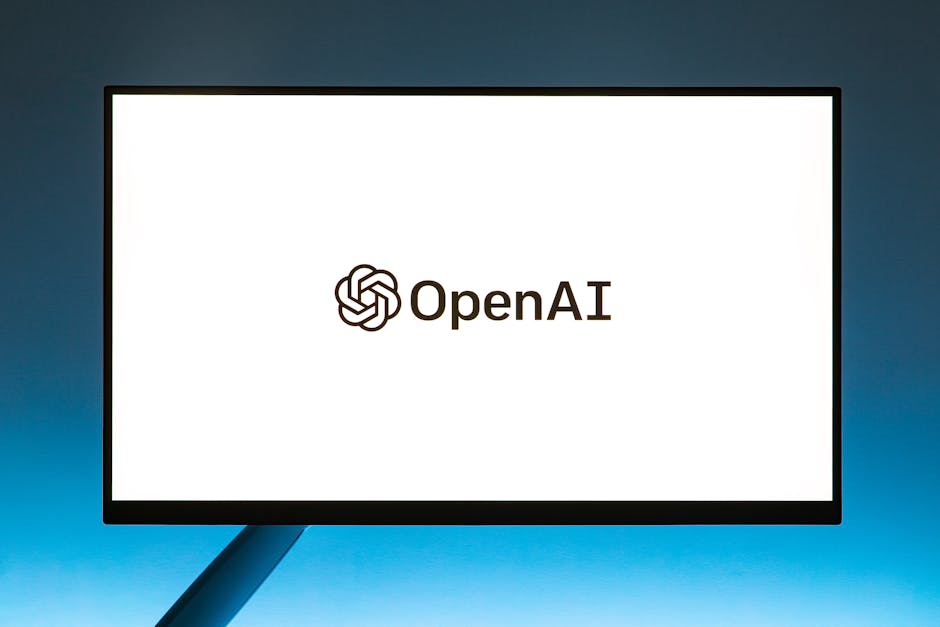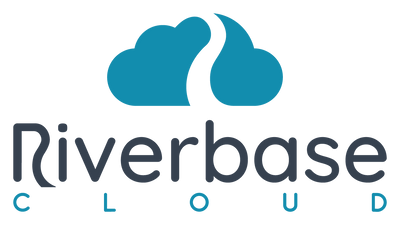Social media creation plays a crucial role in transforming local service businesses from invisible to market leaders. This process involves strategically crafting and distributing content across various platforms to engage audiences and promote visibility.
Social media has evolved from simple networking sites like Six Degrees to complex ecosystems that support a wide array of interactions—from content sharing and live streaming to sophisticated advertising tools. This evolution has magnified the impact of social media, making it an indispensable tool for businesses seeking to gain and sustain online visibility, connect with their target audience, and drive engagement.
Today, whether you’re aiming to boost your Google rankings, attract ideal customers, or establish a robust online presence, understanding the nuances of social media creation is essential. This means being aware of which platforms best suit your business, the type of content that resonates with your audience, and the strategies that can help amplify your reach effectively.

Understanding Social Media Creation
When we talk about social media creation, we're diving into the heart of what makes social media tick. It's about crafting content that not only captures attention but also engages and resonates with audiences across various platforms. Let's break it down into three main areas: Content Types, Platforms, and Audience Engagement.
Content Types
Content is the core of social media. It can range from simple text posts and images to more complex formats like videos and interactive polls. Each type serves a different purpose and engages users in different ways. For instance:
- Text Posts: Great for quick updates or sharing thoughts.
- Images: Capture attention quickly; ideal for showcasing products or sharing quotes.
- Videos: Highly engaging; can be used for tutorials or behind-the-scenes looks.
- Infographics: Useful for presenting data or information in a visually appealing way.
- Live Streams: Foster real-time interaction and are perfect for Q&A sessions or special announcements.
Each type of content has its place and effectiveness depending on the message you want to convey and the reaction you seek from your audience.
Platforms
Choosing the right platform is crucial in social media creation. Each platform has its unique environment and user expectations. Here’s a quick overview:
- Facebook: Great for a diverse audience; supports all content types.
- Instagram: Highly visual; ideal for photos and short videos.
- Twitter: Perfect for quick updates, news, and engaging with trends.
- LinkedIn: Best for professional content and networking.
- TikTok: Dominated by short, engaging videos; popular with younger audiences.
Understanding the strengths and audience of each platform allows you to tailor your content effectively, ensuring it reaches and impacts the right viewers.
Audience Engagement
Engagement is the currency of social media. It's not just about broadcasting your message but also about sparking conversations and building relationships. Here are some effective strategies to boost engagement:
- Know Your Audience: Understand their interests, problems, and preferences. Use tools like social media analytics to gather data on what they engage with the most.
- Create Valuable Content: Always aim to educate, entertain, or inspire your audience. This could mean solving a problem, answering a question, or simply making them smile.
- Encourage Interaction: Ask questions, run polls, or start challenges. Interactive content prompts users to comment, share, and participate.
- Respond Promptly: Engage with comments and messages. A quick response can make users feel valued and foster a loyal community.
By combining the right content types with the appropriate platforms and engaging actively with your audience, you can elevate your social media presence and achieve your business goals more effectively. As we move into more detailed strategies for crafting compelling social media content, keep these foundational elements in mind to ensure your efforts are well-directed and impactful.
The Birth of Social Media
The journey of social media creation began in the late 90s, marking a pivotal shift in how we communicate and interact online. Let's dive into the origins and growth of this digital revolution.
Six Degrees: The First Social Media Platform
It all started with Six Degrees, launched in 1997. This platform was groundbreaking because it allowed users to create profiles, connect with friends, and expand their networks. It was based on the concept of "six degrees of separation," suggesting that everyone is just six or fewer steps away from any other person in the world. Although Six Degrees eventually shut down in 2001, it set the foundation for the social media platforms that followed.
MySpace: The Rise of Personal Expression
Following Six Degrees, MySpace emerged in 2003 and quickly became a cultural phenomenon. It was here that personal expression took center stage. Users could customize their profiles with music, backgrounds, and a distinct layout, making each profile a reflection of one's personality. MySpace was particularly influential in the music industry, giving new artists a platform to share their work and connect with fans.
Timeline of Growth
The growth of social media has been exponential: - 2004: Facebook launches, initially targeting college students before opening to the general public. - 2005: YouTube is introduced, revolutionizing video sharing and consumption. - 2006: Twitter starts, changing how we consume news with its microblogging format. - 2010: Instagram goes live, shifting focus to mobile and visual content.
Each of these platforms introduced new ways for users to share, connect, and engage with content and each other, contributing to the vast landscape of social media we see today.
As we continue to explore the impact of these platforms, it's clear that the evolution of social media is closely intertwined with technological advancements and cultural shifts. Understanding this history helps us appreciate how integral social media has become to our daily lives and hints at its future potential in shaping our digital interactions.
In the next section, we'll look into the tools and technologies that are enhancing social media creation, making it easier and more effective for users and businesses alike to convey their messages and reach their audiences.
Tools and Technologies for Social Media Creation
Navigating the landscape of social media creation requires not just creativity and strategy but also the right set of tools. Here, we explore various technologies that help streamline the process, enhance quality, and boost engagement.
Design and Graphics Tools
-
Canva: A favorite for non-designers and professionals alike, Canva simplifies graphic creation with its drag-and-drop interface and vast library of templates. Ideal for creating social media graphics, presentations, and more.

-
PicMonkey: Offers robust photo editing and graphic design features, helping users craft eye-catching images for social media posts, ads, and logos.

-
Crello: Similar to Canva, Crello provides extensive design templates and multimedia options including videos and animations, perfect for dynamic social media content.

Photography and Image Resources
-
Unsplash: This platform is a treasure trove of high-quality, royalty-free images that can be used for any social media campaign.

AI-Driven Creation and Editing Tools
-
DALL-E: Developed by OpenAI, this tool generates realistic images and art from textual descriptions, pushing the boundaries of creative AI in social media content.

-
ChatGPT: Also from OpenAI, ChatGPT assists in generating textual content, from tweets to full blog posts, making it a go-to for written content needs.
-
Jasper: An AI content platform that helps create engaging content tailored to specific audience preferences and platforms.
Video and Audio Production Tools
-
Biteable: An easy-to-use platform for creating animated videos, perfect for social media intros, ads, and explainer videos.

-
Promo: Enhances video marketing efforts with tools to create, publish, and schedule social media videos quickly.

-
Audacity: A free, open-source tool for audio editing, useful for podcasts and voiceovers.

-
Riverside: An AI-powered tool for recording high-quality audio and video, ideal for podcasts and interviews.

Content Management and Scheduling Tools
-
Buffer: Streamlines content posting across various social platforms, allowing for scheduling and analyzing social media posts.

-
CoSchedule: A marketing calendar that helps organize and schedule marketing campaigns, including social media posts.

-
Later: Focuses on visual content scheduling, especially useful for platforms like Instagram and Pinterest.

Productivity and Writing Assistance Tools
-
Notion: A versatile tool for organizing content ideas, planning calendars, and managing workflows.

-
Todoist: Helps keep track of content deadlines and to-dos, ensuring no part of your social media strategy is overlooked.

-
Grammarly: An AI-powered writing assistant that checks for grammatical errors and enhances the clarity of social media posts.

Social Media Management Tools
-
Sprout Social: Provides comprehensive tools for managing social media interactions, scheduling posts, and analyzing engagement data.

These tools collectively empower creators and marketers to produce high-quality content efficiently. Whether it's through captivating visuals, compelling text, or engaging videos, the right technology can significantly enhance the impact of your social media presence. As we continue to explore the facets of social media creation, it becomes evident how these tools not only simplify tasks but also open up new possibilities for creativity and connection.
Strategies for Effective Social Media Content
Social media creation is an art and a science. To make sure your content stands out and achieves your business goals, you need a clear and structured approach. Let's dive into the strategies that can make your social media efforts more effective.
Research
Start with research. Understanding what resonates with your audience is crucial. Use social media analytics to see what works and what doesn’t. Keep an eye on trends and listen to the conversations happening around your industry. This insight guides your content strategy and helps tailor your messages to meet audience needs.
Goal Setting
Next, set clear goals. What do you want to achieve with your social media content? Whether it's increasing brand awareness, driving traffic to your website, or boosting sales, your goals should be specific, measurable, achievable, relevant, and time-bound (SMART).
Creative Brainstorming
Hold a creative brainstorming session. Gather your team and think freely without judgment. This is your chance to pool together diverse ideas and experiences, which can then be shaped into compelling content. Even if you’re a solo entrepreneur, take time to jot down all your ideas before refining them.
Role Assignment
Assign roles clearly. If you have a team, make sure everyone knows their responsibilities, from who crafts the posts to who handles analytics. This clarity reduces overlap and ensures smoother content creation.
Content Calendar
Develop a content calendar. This is your roadmap for what to post and when. It helps you plan your content distribution across different platforms, keeping your posting schedule consistent and strategic. Use tools like Buffer or CoSchedule to automate and organize your content effectively.
Scheduling
Scheduling your content ensures that it reaches your audience at the most optimal times. Tools like Later and Buffer can automate posting across time zones, ensuring your content works hard even when you’re not online.
Content Library
Create a content library. This is a repository of all your content assets—images, videos, posts, and blogs. Having everything in one place makes it easier to repurpose and use content efficiently.
Analyzing Results
Finally, regularly analyze your results. Use the data from your social media platforms to see what’s working and what’s not. This analysis will help you refine your strategy continuously, enhancing the effectiveness of your social media efforts.
By following these strategies, you can ensure that your social media creation efforts are not only creative but also structured and effective, leading to better engagement and achieving your business objectives. We'll explore how leveraging AI can further enhance your social media content creation.
Leveraging AI in Social Media Creation
AI tools like ChatGPT and Jasper are revolutionizing the way we approach social media creation. These tools are not just about automating tasks; they're about enhancing creativity and delivering insights that can transform your social media strategy.
ChatGPT
ChatGPT has made a significant impact by offering capabilities that extend beyond simple text generation. It assists in brainstorming ideas, generating engaging content, and even providing SEO strategies which are crucial for increasing visibility online. For instance, if you're stuck on what to post next, ChatGPT can generate multiple content ideas quickly, helping you maintain an active presence on social media without the constant pressure of coming up with new ideas.
Jasper
Similarly, Jasper excels in creating high-quality content across various formats. Whether you need a catchy tweet, a compelling blog post, or creative captions for Instagram, Jasper can tailor its output to suit the specific platform’s tone and audience. This adaptability makes it an invaluable tool for content creators who need to manage multiple social media accounts.
AI Analysis
AI Analysis tools dive deep into the data from your social media activities. They track engagement rates, analyze the performance of different types of posts, and even monitor competitor activities. This information is crucial because it tells you what’s working and what isn’t, allowing you to adapt your strategy in real-time. For example, tools like Sprout Social provide detailed reports that help you understand audience behavior and preferences, which can guide your content creation efforts.
AI Content Generation
AI Content Generation is perhaps the most significant advantage AI brings to social media creation. AI doesn't just create content; it creates smart content. For instance, AI tools can automatically generate posts that are optimized for the time of day when your audience is most active, increasing the likelihood of high engagement. They can also suggest and include trending hashtags or modify your content’s style to match what’s currently popular in your industry.
By integrating AI into your social media strategy, you can not only save time but also enhance the quality and relevance of your content. This leads to better engagement, more followers, and ultimately, a stronger brand presence online.
As we continue to explore the exciting capabilities of AI in social media, the next section will address some of the most common questions around social media creation to help you better understand and navigate this complex landscape.
Frequently Asked Questions about Social Media Creation
What is Social Media Creation?
Social media creation involves crafting content specifically designed for social media platforms. This includes everything from short text posts and images to long-form videos and interactive polls. The goal is to engage with your audience through content that informs, entertains, or inspires.
How to Create Engaging Social Media Content?
Creating engaging content starts with understanding your audience. Here are some steps to ensure your content resonates:
- Know Your Audience: Use tools like social media analytics to learn what your audience likes.
- Be Consistent: Regular posting keeps your audience engaged.
- Use Visuals: Images and videos are more engaging than text-only posts.
- Stay Relevant: Keep up with trends but remain true to your brand.
- Interact: Respond to comments and messages to build community.
For example, a study on social media trends showed that posts with images see much higher engagement compared to those without. Also, personalizing content to audience preferences increases relevance and interaction.
What Tools are Essential for Social Media Content Creation?
Several tools can enhance your content creation process:
- Graphic Design Tools: Canva and PicMonkey help create eye-catching images and layouts without needing professional design skills.
- Video Editing Software: Tools like Biteable and Promo allow you to create professional-looking videos tailored for social media.
- AI Writers: ChatGPT can generate text content that you can tweak and use in your posts.
- Analytics Tools: Sprout Social and Buffer provide insights into how your content performs, helping you make informed decisions.
These tools streamline the creation process, from initial design to final analytics, ensuring your content is both high-quality and effective.
By integrating these tools and strategies, you can create more engaging and impactful social media content, fostering better connections with your audience and strengthening your online presence. Remember that the landscape of social media is always evolving, and staying informed is key to your success.
Conclusion
As we navigate the ever-changing landscape of social media, stay ahead with innovative partners like Riverbase Cloud. Our commitment at Riverbase Cloud is not just to keep pace but to set the pace in the digital marketing realm. We empower our clients through our comprehensive Power SEO Program, ensuring they leverage the latest strategies and technologies in social media creation.
The Future of Social Media is an exciting frontier of endless possibilities. Trends will come and go, platforms will evolve, and new technologies will emerge. The constant in this dynamic environment is the need for creativity and adaptability. As social media platforms grow more sophisticated, so too must our strategies and tools.
Continuous Learning is crucial in this context. To remain relevant and effective in social media creation, we must stay curious and informed. Whether it's the latest AI technology or a new content trend, understanding these elements allows us to adapt and thrive. At Riverbase Cloud, we foster a culture of learning and innovation, ensuring that every strategy we implement is informed by the most current knowledge and best practices.
We encourage our clients and team members to embrace the journey of continuous improvement. The path to mastering social media creation is ongoing—there is always more to learn, more to explore, and more to achieve.
Together, with tools like Buffer, and our in-depth knowledge, we are not just participating in the digital age; we are driving it. Let's continue to innovate, learn, and lead in the exciting world of social media. Join us at Riverbase Cloud, and let's craft a future that's not only reactive but revolutionary.


